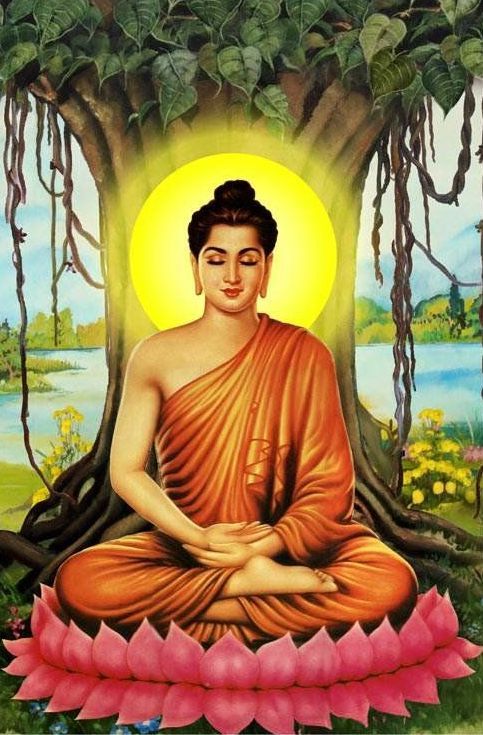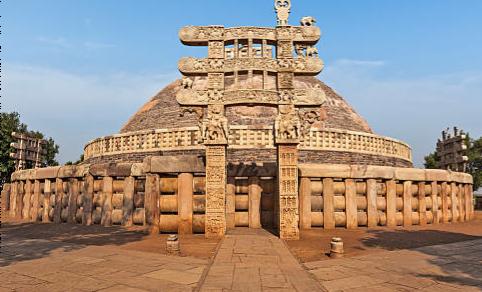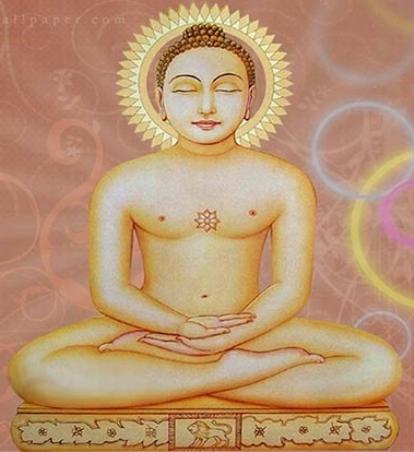Buddha, Upanishads and the Monastries
Buddha, Upanishads and Monasteries
2500 years back from today, a new thought came to live. His name was Siddhartha, popularly known as Gautama. He was the founder of Buddhism beliefs. The lives of the people began to change since that time. Manajanapadas were becoming very powerful, new cities were developing. People were in search of true meaning and motive of life.

The Buddha belonged to the Sakta Gana and Kshtriya Varna. He was a very curious child since his young age. When he was very young he left behind all the comforts of home in search of knowledge. He wandered around for many years, held discussion with my great thinkers and philosophers. He then started on his own path of realisation and meditated all day long for several years under a Peeple tree at Bodh Gaya, in Bihar. Its here that he attained enlightenment and came to be known as Buddha, the Wise one.
He then reached Sarnath, in Varanasi where he preached for the first time. He led his life in this way only, wandering from places to places on foot, preaching people the true meanings of life, till he breathed his last in Kusinara.
In his teachings he mentioned that life is full f suffering and unhappiness because we have so many desires, which when doesn’t get fulfilled, it leads to unhappiness. Even when we get what we want we have cravings for more. This means that we are never satisfied. This constant desires leads to dissatisfaction and unhappiness. Buddha explained that this craving can be overcome by living life in moderation. He described it as thirst or tanha.
He preached that one should be kind to every one including animals. He believed that whatever karma or deeds we do whether good or bad, comes back to us either in this birth or next. He preached in the Language of the ordinary people, Prakrit, so that everyone could understand them. The stupa at Sarnath is believed to be the place where Buddha first preached his message.

Upanishads
Many people had many questions in their mind. They were in search of questions like life after death, what survives after death, what is atman or soul , is atman or Brahman remains ever after. Their ideas were recorded in Upanishads, the later version of the vedic texts. Upanishads literally means ' approaching and sitting near’. The ideas are recorded in terms of conversation between teachers and students.
Men, rajas and the Brahmins were maiy the Upanishads thinkers. The famous woman thinker , Gargi is known for her learning and participation in debates helds in courts. However the poor were not allowed to be the part of these discussions, but an exception was there. Satyakama Haveli, son of slave woman Haveli, who had keen interest in knowing about the truths. He was accepted as a student by one of the Brahmin named Gautama. He appeared as one of the best thinker if his time.
This was also the time when a scholar called Panini prepared grammar in Sanskrit. He arranged vowels and consonants in a special way and used them as formulae like Algebra in Mathematics.
Jainism, The Sangha
Jainism & Sangha
The last and 24th Tirthankara of the Jainas, Vardhaman Mahavira spread his message around 2500 years ago. He was Kshatriya prince of Lichchavis. This group was a part of the Vajji Sangha. At the age of 30 he left the home to wander about in the forests. For 12 years he led a hard and lonely life. At the end of his life he attained enlightenment.

He preached very simple doctrine:
- People , whether men or women, in search of truth of life must leave their homes.
- One must strictly follow ahimsa, or non violence, that means not killing or hurting any living being.
He preached in Prakrit Language, which was the Language of ordinary people, so that they could understand his teachings without any difficulties. However, there were different forms of Prakrit Language. For example, Prakrit spoken in Magadh were called Magadhi.
Followers of Mahavira had to follow certain rules of leading a simple life.
- They had to beg for food.
- They had to be absolutely honest.
- They had to abstain from stealing.
- They had to maintain celibacy.
- They had to give up every comforts, including their clothes.
It was very difficult for people to follow such strict rules. Nevertheless many thousands of men & women left their homes, while many just supported the monks and nuns by providing them food.
Jainism was followed by mainly the traders. Farmers found it very difficult to follow as they had to kill insects in order to protect their crops. The word Jaina, comes from the word Jina, which means conquerer. Jainism spread to many parts of North India, Gujarat, Tamil Nadu. For many years the teachings of Jainism were transmitted orally. The written forms are found in Valabhi, in Gujarat.
The Sangha
Both Mahavira and Buddha believed that only those who can leave their homes could attain enlightenment. So they joined an association called Sangha. Sangha was meant for those who left homes.
The rules meant for the Buddhist Sangha were written down in the book called Vinaya Pitaka. There were separate branches for men and women. All men could join the Sangha. To join the Sangha, children had to take permission of their parents, slaves of their masters, people under king had to seek permission from them, debtors from their creditors. Women had to take their husbands permission before joining the Sangha.
People who lived in Sangha, followed a very simple life. They meditated for most of the time. They visited cities and towns to beg for food. They were thus called bhikkus and bhikkunis, Prakrit word for renouncer of begger.
They taught others and helped one another. They also held meeting to solve quarrels that held with in the Sangha.
Kshatriyas, Brahmins, labourers, traders, courtesons, barbers, merchants, slaves were the one who joined the Sangha. Many wrote down their teachings, some composed poems describing their lives.
Monasteries
Both Buddhist and Jaina monks wanderers around from place to place teaching people. Then they started living in natural caves in hilly regions. Or their supporters build temporary homes for them.
With time , the need for permanent settlement were felt, so Monasteries were built . They were known as viharas.
Initially the viharas were made of wood, later on, they were built of bricks. Some were even in the caves that were dug out in the hilly areas, especially in western areas.
Many a times, the land on which the viharas were built were donated by rich merchant, kings or rich follower. The local people came with food, clothes medicine for the monks and the nuns in return of their teachings. In no time, Buddhism spread to many continents and wide.
During this time only, the concept of ashramas came up through the Brahmins.
Ashrams here means stages of life. Four ashramas were recognised:
- Brahmacharya
- Grihastha
- Vanaprastha
- Samnyasa
Brahmins, Kshatriya, vaishya were expected to lead simple lives and study Vedas in the initial stages of lives. ( Brahmacharya).
Then, they had to marry and live as households. ( Grihastha)
Then they had to live in the forest and meditate(vanaprastha)
Then they had to give up everything and live life as samnyasis.
Ashramas allowed people to spend some part of their lives in meditation. Women were not allowed to study the Vedas. Even the ashramas for them were chosen by their husbands.

 Indira Gandhi Memorial High School
Indira Gandhi Memorial High School
